The ultimate goal of any SaaS company is to see users gradually integrate their software into their daily lives.
The process that makes this happen is called product adoption and it usually takes some time, during which you are at risk of losing your customer.
Fortunately, there are methods for accelerating product adoption that can cause users to fall in love with your product faster and make it much less likely they’ll abandon it because they can’t find value in it.
In this article, we’ll explore what those methods are and how you can implement them in your own adoption process.
Let’s go!
Segment the Target Audience of Your Product
Different technology users have different processes for adopting new software and integrating it into their lives.
This is because the users have varying levels of technological expertise and willingness to take on risks when buying software.
In SaaS business, these audience segments are often distributed on a curve to show their numbers and the point at which they make the buy-in.
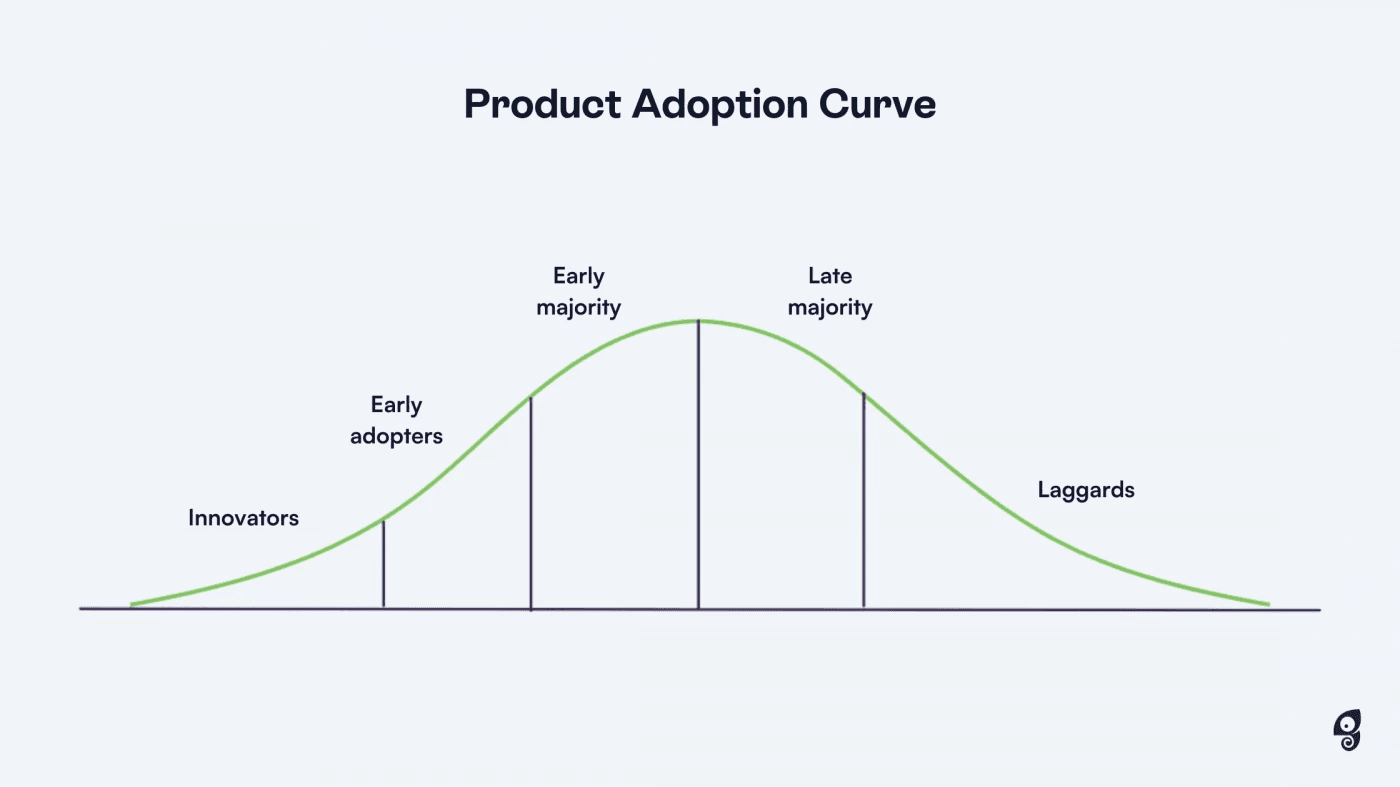
Source: Chameleon
We actually know quite a bit about each of these segments.
For example, we know that innovators and early adopters are motivated by a need to be among the first to try a new technological product.
They usually don’t mind if the technology is still a few updates away from being perfected.
Knowing that about their preferences enables you to adapt your approach to this segment.
For instance, you can market your software in places where you know this audience goes to discover new products, such as Product Hunt.
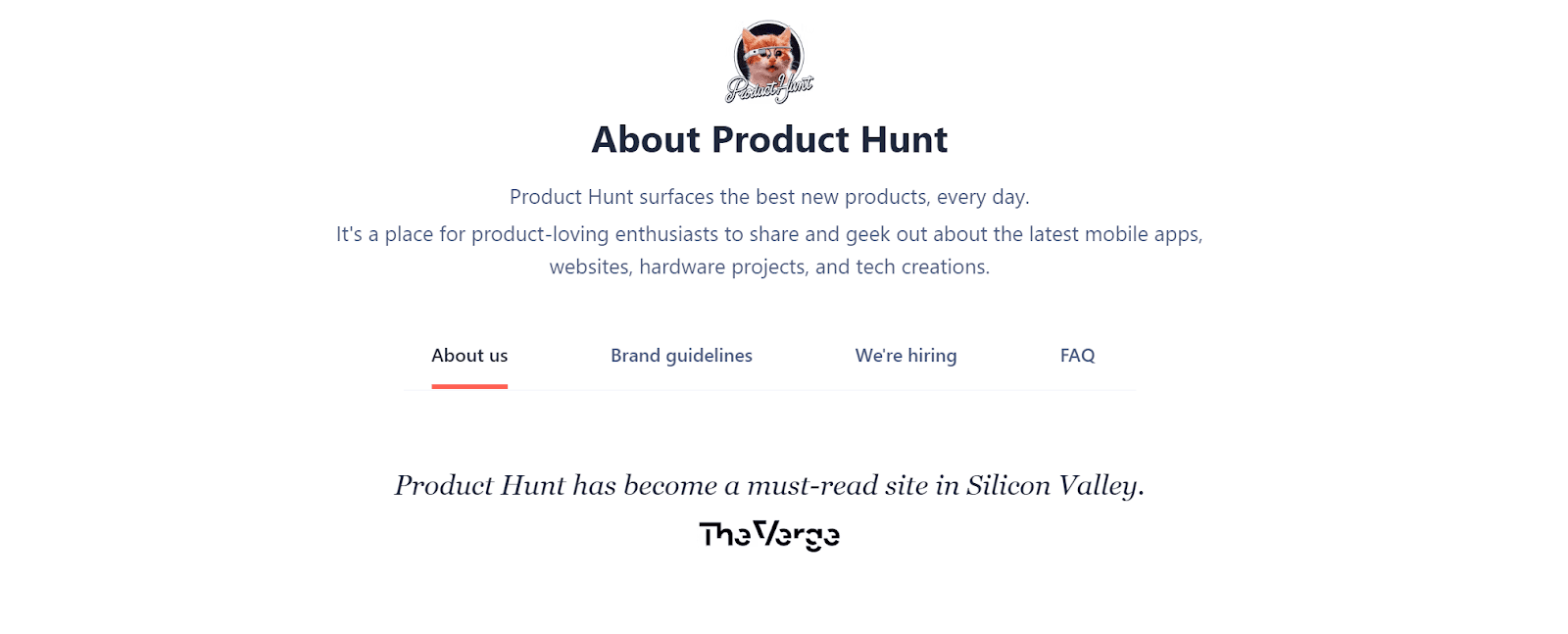
Source: Product Hunt
Here, you’ll be able to build an early audience for your new product that won’t need as much proof that your software is the right fit for them, as long as you keep the price on the lower side.
On the other hand, we also know that the late majority and laggards are cynical toward new technology and that convincing them to learn how to use new software is a challenge.
However, we also know that these segments have more purchasing power.
A good way to approach this segment might be to provide access to user reviews on your website to show these cynics that your software really does offer an excellent solution to their problem.
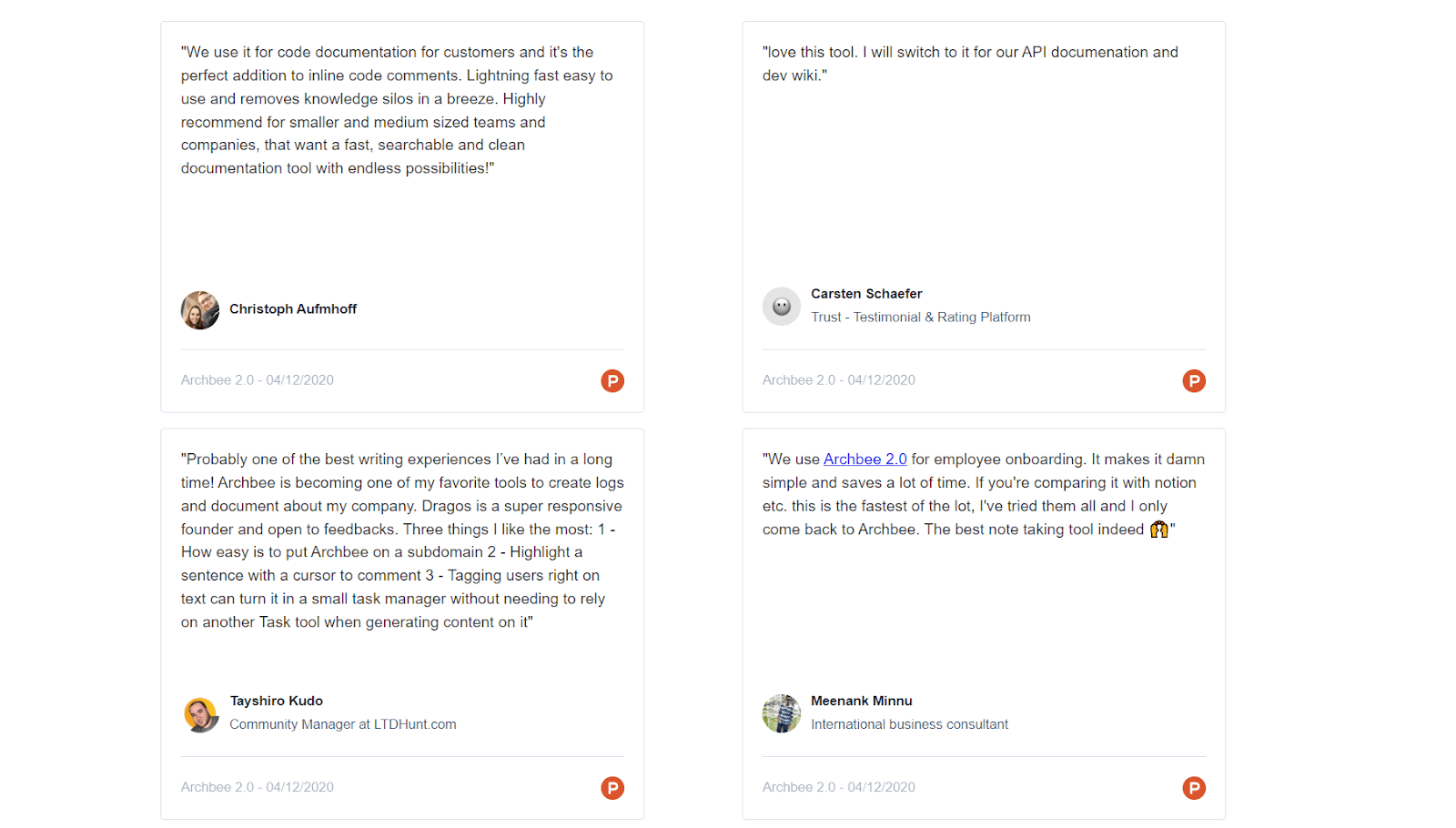
Source: Archbee
And since you know the late adopters aren’t as tech-savvy as the early ones, it’s also a good idea to invest more in customer support to efficiently solve their issues and educate them on proper product use.
That should make the adoption process easier for them once they decide to buy.
The point here is that SaaS products don’t have just one audience, but a few very diverse segments.
Fortunately, we know enough about each one to help them adopt new software quickly and easily.
Make Blog Posts About Your Product
SaaS company blogs draw in users by offering expert advice, actionable tips, and industry news to professionals seeking to advance their careers or resolve work-related issues.
When they come to your website to read blog posts to gain knowledge, users are also introduced to your product as something that can help them solve the issues they are facing and work more effectively.
That means company blogs can be used to trigger the first stage of product adoption: product awareness.
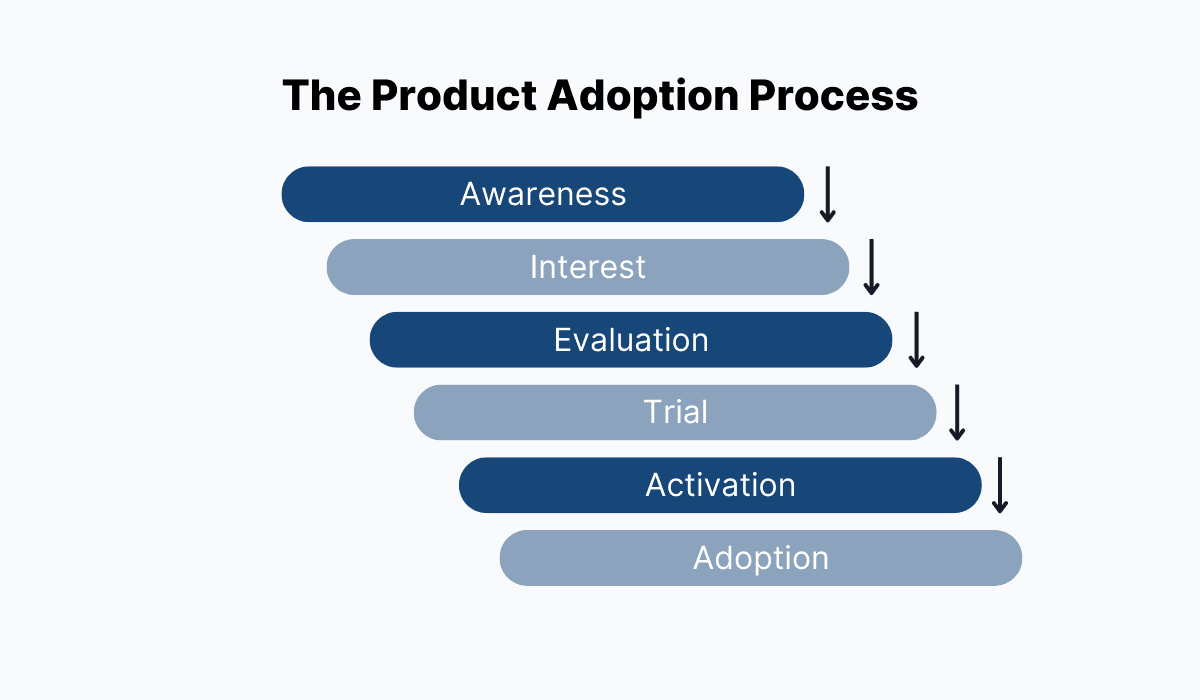
Source: Archbee
That’s precisely why so many SaaS companies maintain blogs.
Blogs are proven to bring a lot of people to a company’s website, where they can become more familiar with the product and start considering it as a good fit for their needs.
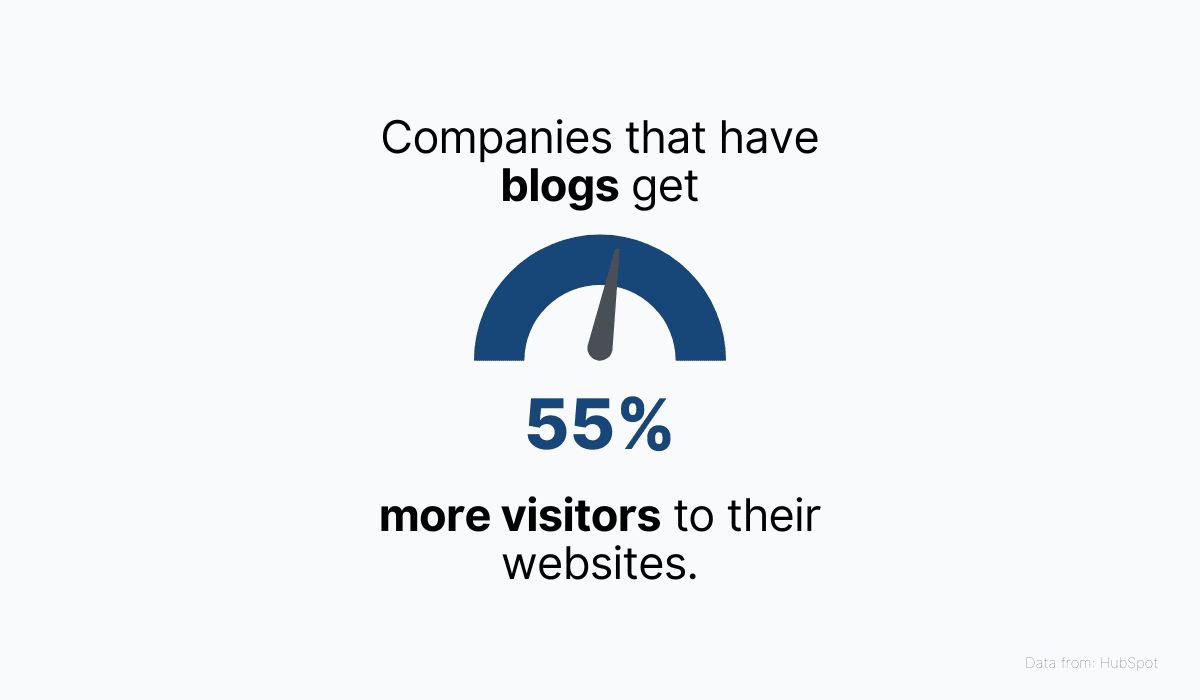
Source: Archbee
A top-tier example of this is Hubspot. This all-in-one CRM platform offers customer service, marketing, and sales tools for all kinds of businesses.
In order to make users aware of their products and services, Hubspot’s marketing team delivers new blog posts on sales, marketing, and customer service topics almost every day of the week.
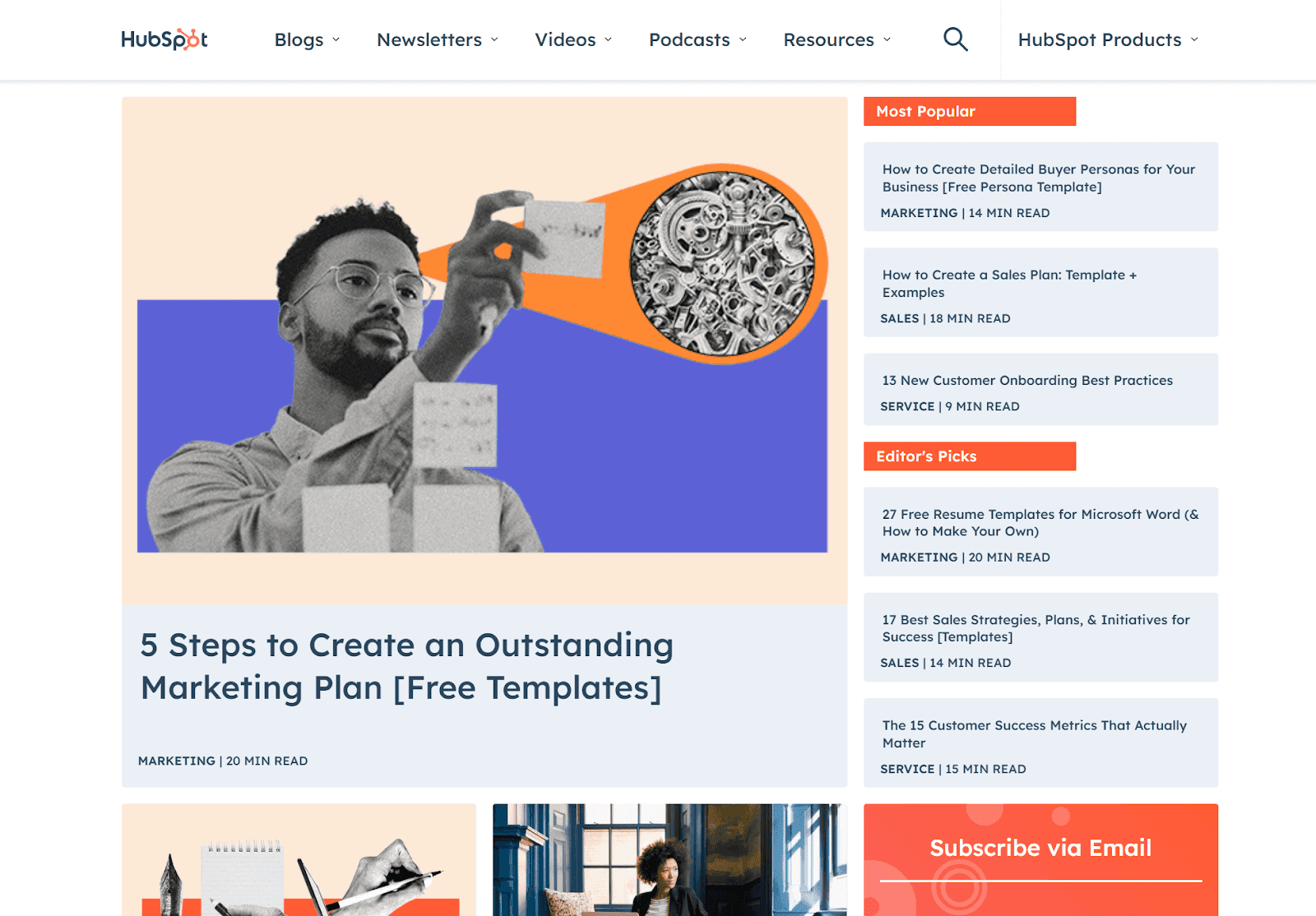
Source: Hubspot
The result of this is that you practically can’t google any question or keyword about these topics without getting Hubspot’s content as a top result.
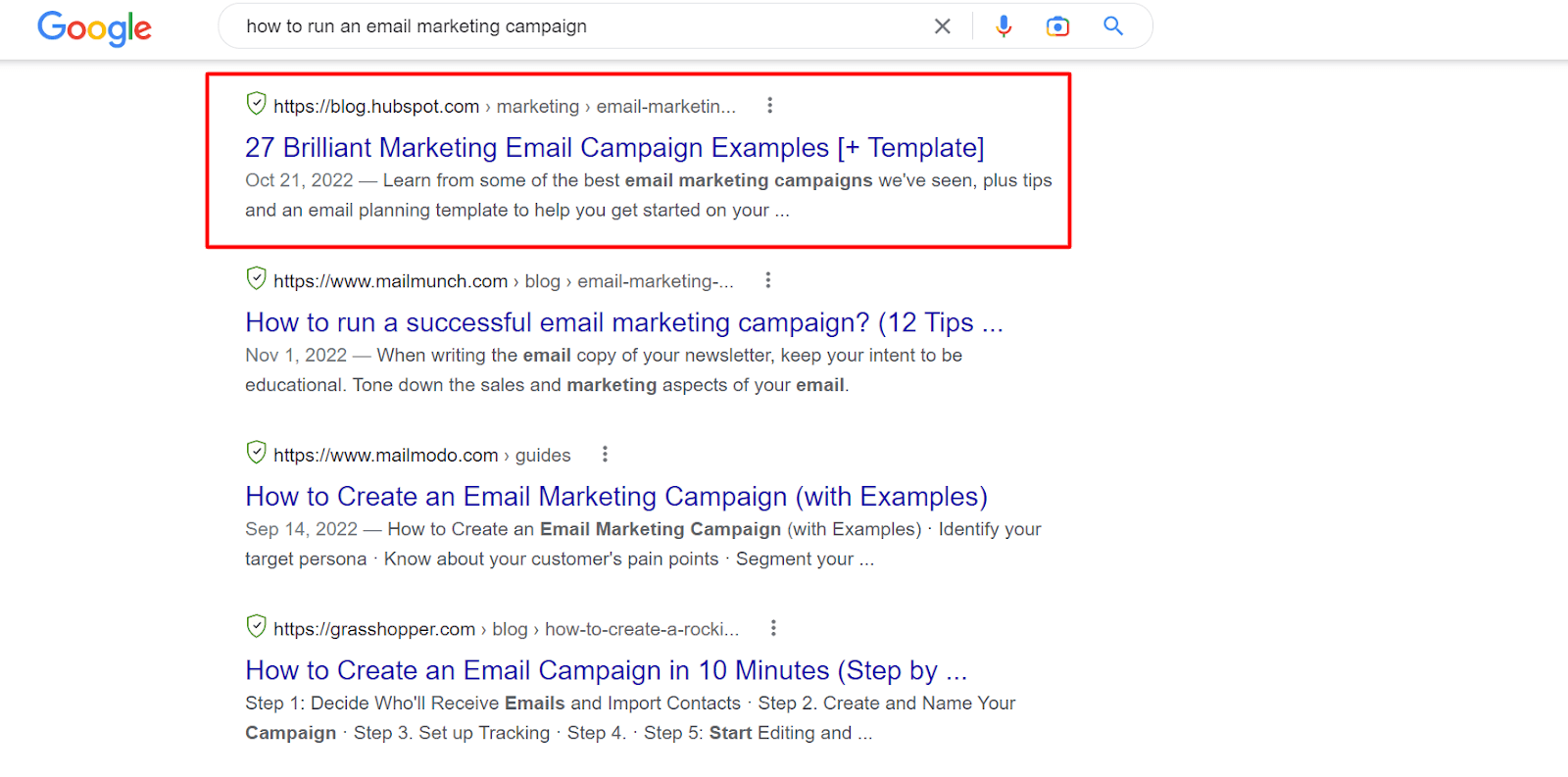
Source: Google
Also, you’ll be hard-pressed to find a marketing or sales expert that hasn’t heard of Hubspot and its tools or considered suggesting them as a solution for their company’s needs.
So, the way that posting on your company blog can help you accelerate product adoption is by putting adoption in motion.
Your blog can raise awareness about your company and products, which is the first stage your future user will go through on their way toward full adoption.
Offer a Free Trial of Your Product
No matter how strong your marketing campaign is or how good your sales staff do their jobs, you’ll always have leads who can’t seem to be convinced.
Maybe they don’t like implementing new technology into their work/life, maybe they just can’t see the value in what you’re offering.
In those circumstances, the smart move is to show, rather than tell, what your product can do by offering these skeptical customers a free trial of your product.
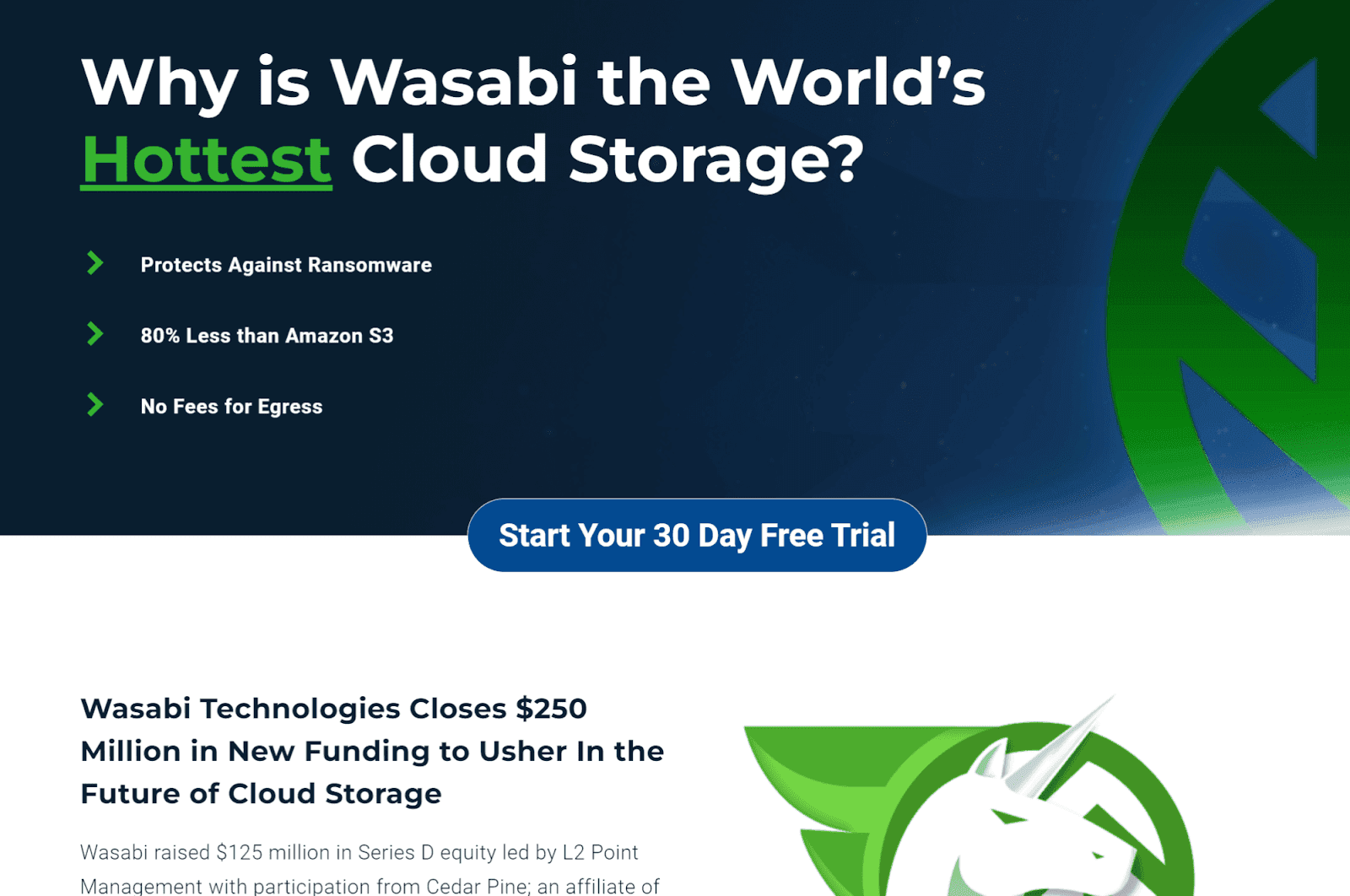
Source: Wasabi
That way, you’ll be giving them a chance to use the software and build their own connection to it without a financial commitment.
The ability to try out the product and see the value it offers should make their purchasing decision much easier.
This might seem like a risky move because you are, after all, giving your product away for free, but the reward is highly likely to be worth it.
Studies show that as much as two-thirds of the users who take advantage of the free trial end up converting into paying customers.
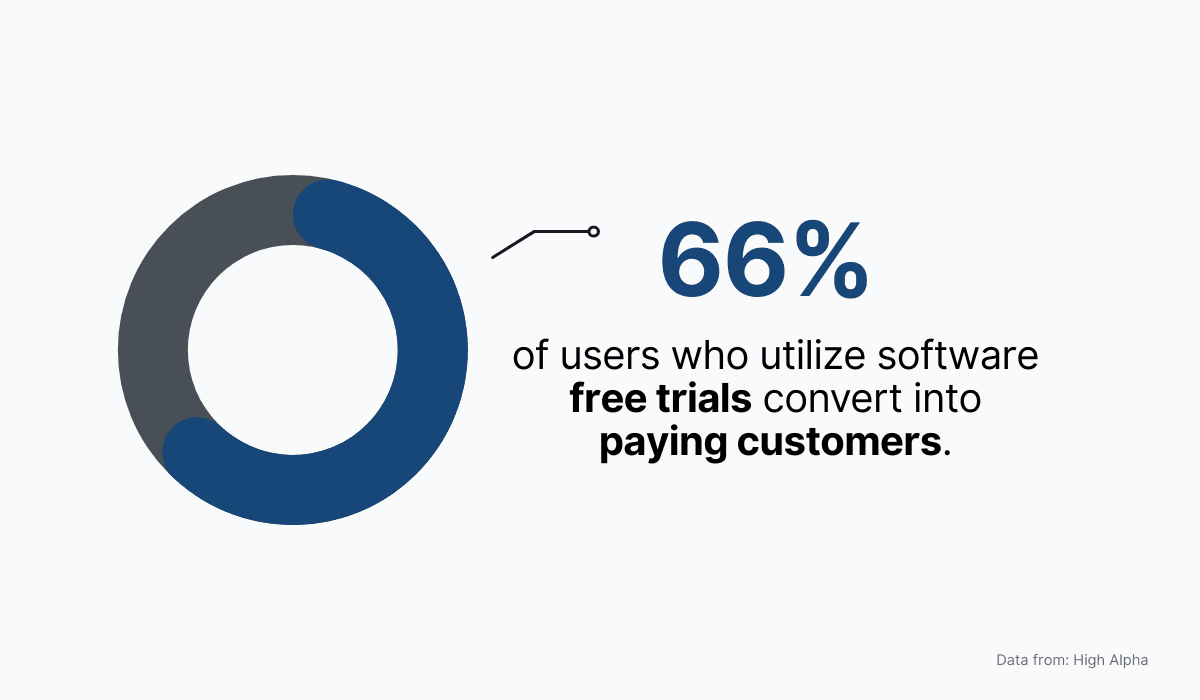
Source: Archbee
These converted customers might have been lost had the free trial not been an option.
Now, you must be wondering how long the trial period should be. And the answer is that there’s no set rule.
Some providers make their free trial short to inspire urgency and pressure the user into converting.
Others give their users weeks or even a month to allow them to explore every feature the software has to offer.
The answer may lie somewhere in between, as research by Databox has found that almost half of companies offer a trial period longer than 14 but shorter than 30 days.
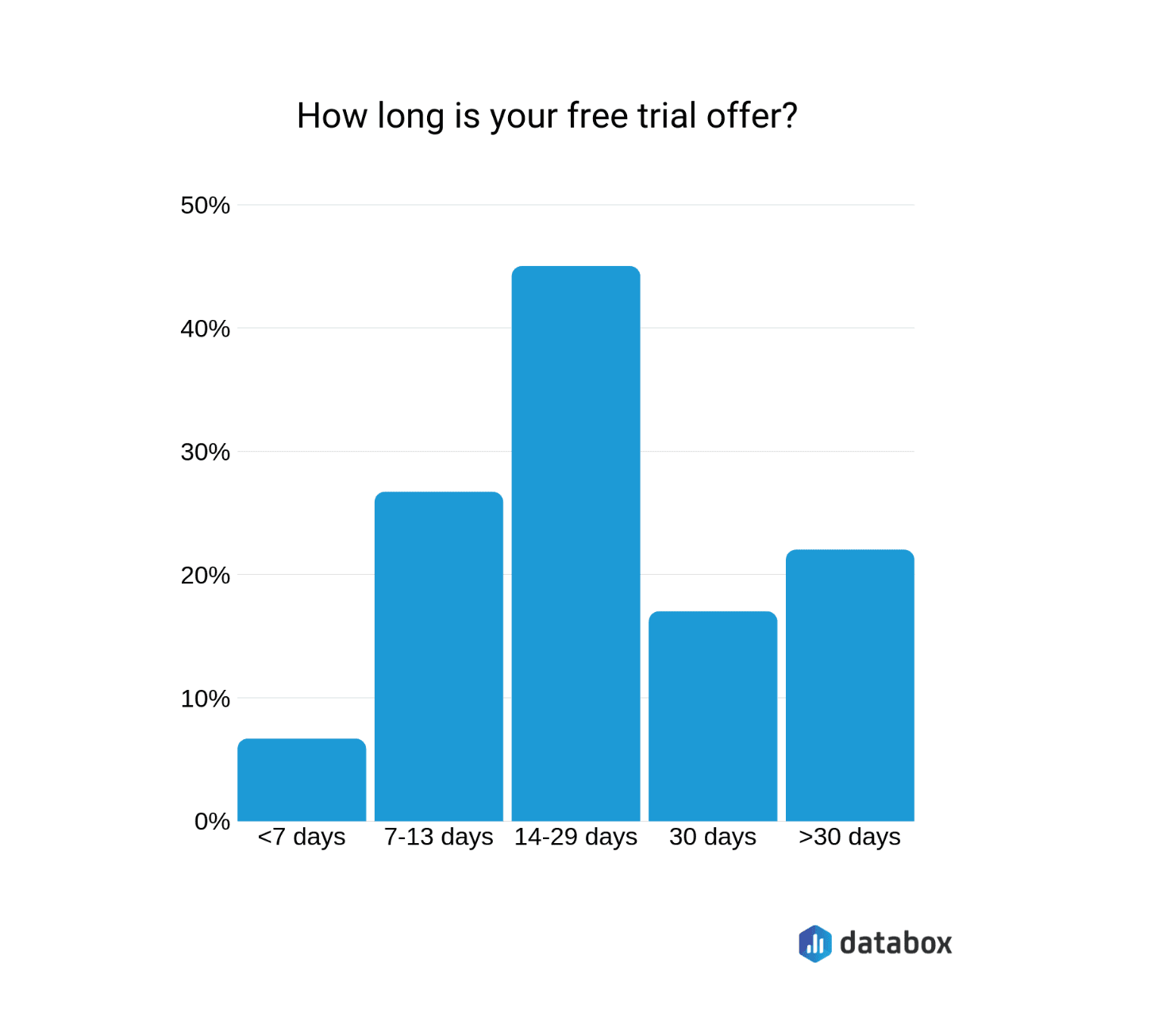
Source: Databox
Since free trials for SaaS products help users see the value you can offer firsthand, we definitely recommend implementing one for your software.
This sort of access should be enough to prove even to your most stubborn customers that your software is worth the investment and accelerate their adoption of the product.
Design a Great Product Walkthrough
Greeting your new users with a blank interface and no guidance is never a good idea.
It might take ages for the user to find their way around the product and learn how to use it efficiently to complete their tasks.
That means a lot of time is wasted, and product adoption is delayed into an uncertain future.
If, on the other hand, you put in the effort to support your user during their first interactions with the product, they should be able to learn to use it properly in much less time, accelerating the adoption process.
You can do that with a good product walkthrough.
A product walkthrough is an interactive onboarding experience that leverages features such as mouse beacons, checklists, and pop-up instructions to guide new users as they begin using the product.
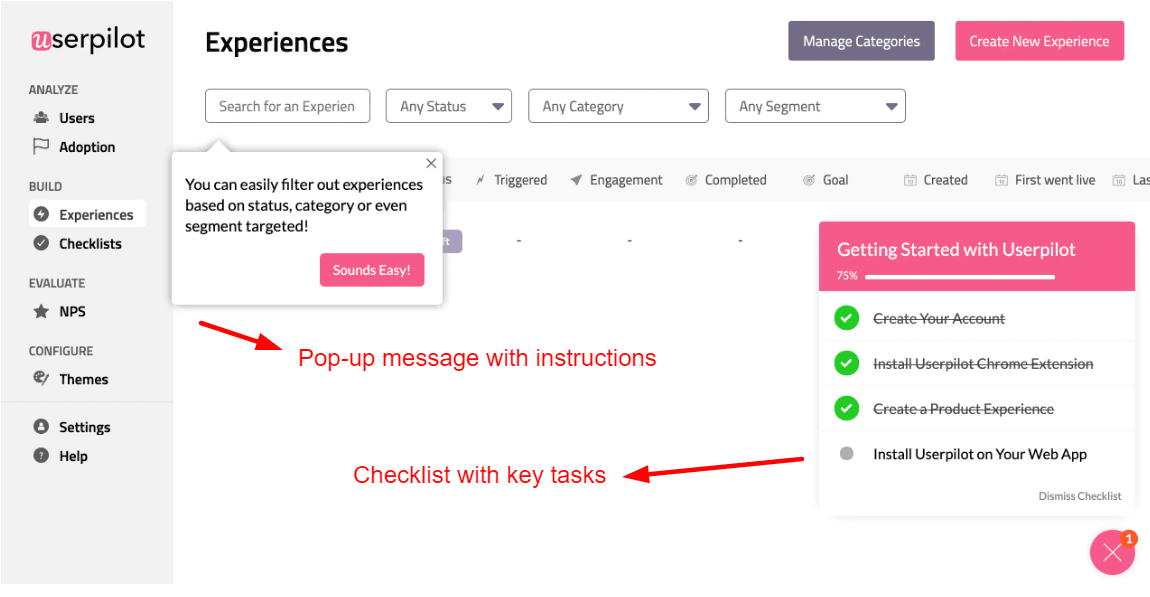
Source: Custify
An important goal every product walkthrough should accomplish is to transport the new user to their Aha! moment or moment of activation when they finally realize what the software is all about and how it can help them in their work/life.
Once this happens, the user will very likely feel motivated to keep using the product because they can see the value in it. In other words, they’ll adopt the product and implement it into their routine.
For Asana, the project management tool, that moment happens when the user creates their first task to manage.
So it makes sense that Asana’s walkthrough is focused on directing and supporting the user as they take that specific action.
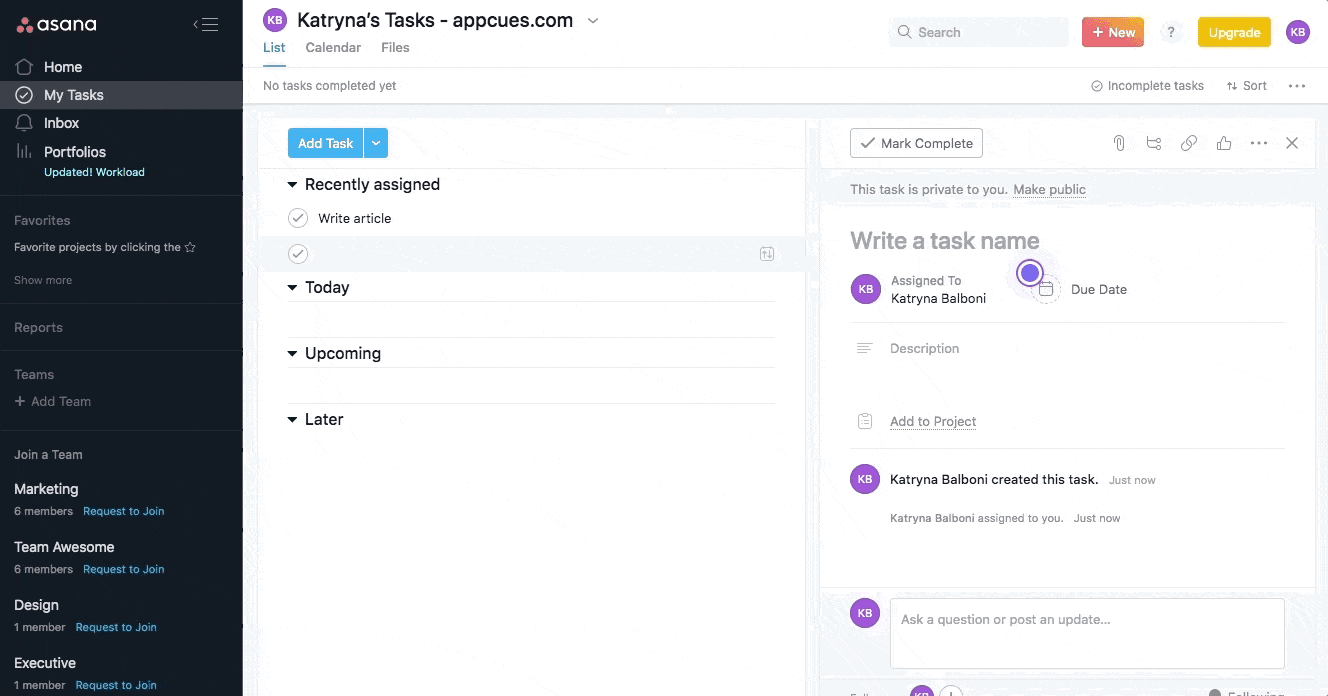
Source: Appcues
The key takeaway here is that the moment of activation is usually followed by complete product adoption.
A product walkthrough can help you bring your user to that moment faster than they would find it on their own, meaning product walkthroughs can greatly accelerate product adoption.
Provide Users With a Product Knowledge Base
Along with a good product walkthrough, users also expect you to provide a repository of knowledge where they can learn how to successfully use the product, fix common problems, and advance their skills so they can do more complex tasks.
A product knowledge base is exactly that kind of resource. It contains knowledge articles written by experts at your company (technical writers, product staff, support reps, or a combination of all of them) that answer all of these user needs.
For example, take a look at all of the knowledge articles Slack offers to its users to facilitate product use:
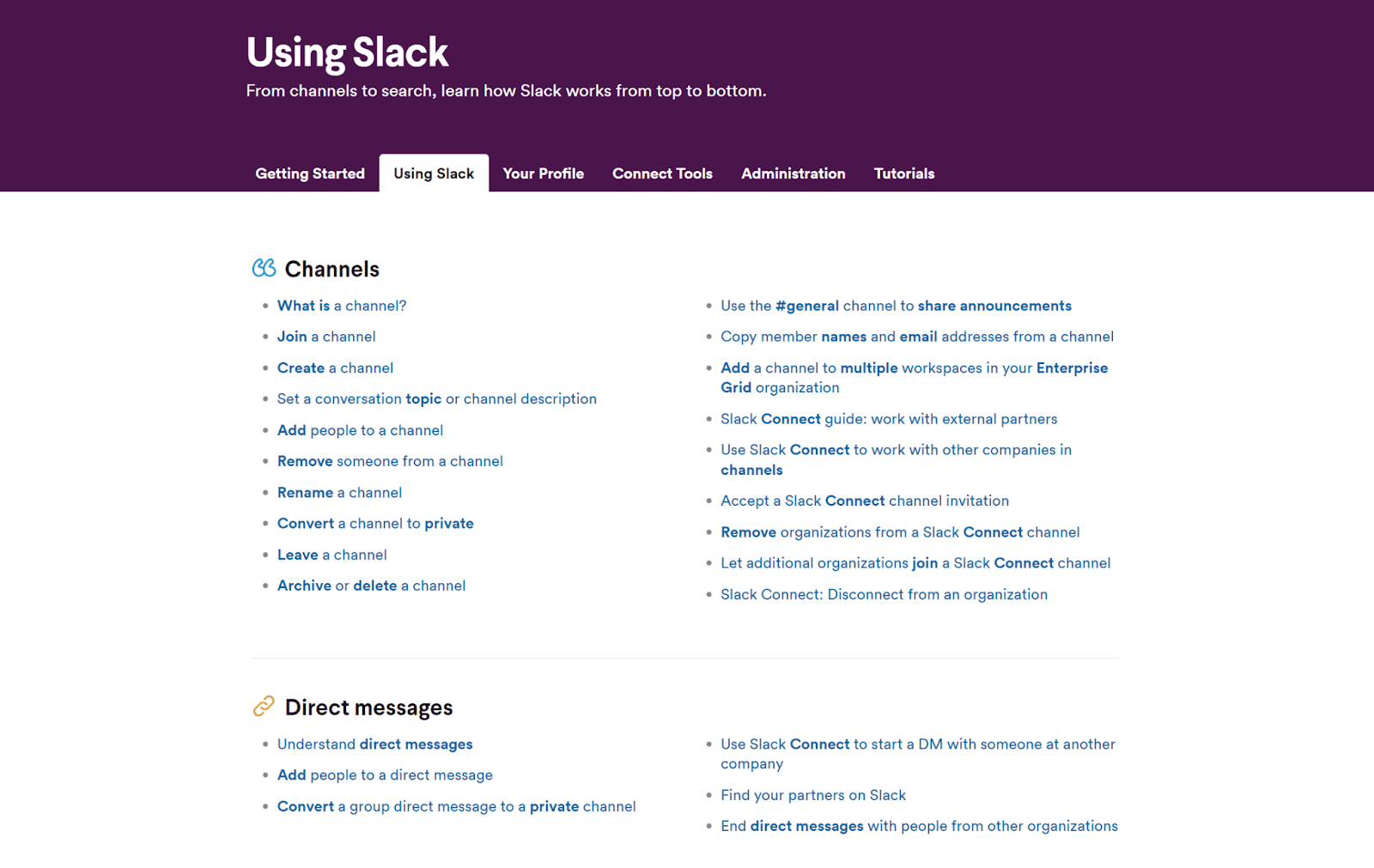
Source: Slack
These articles are created, published online, and managed using specialized documentation software, such as Archbee, that allows anyone in your company who has the knowledge to share to easily write documentation and upload it in just a couple of clicks.
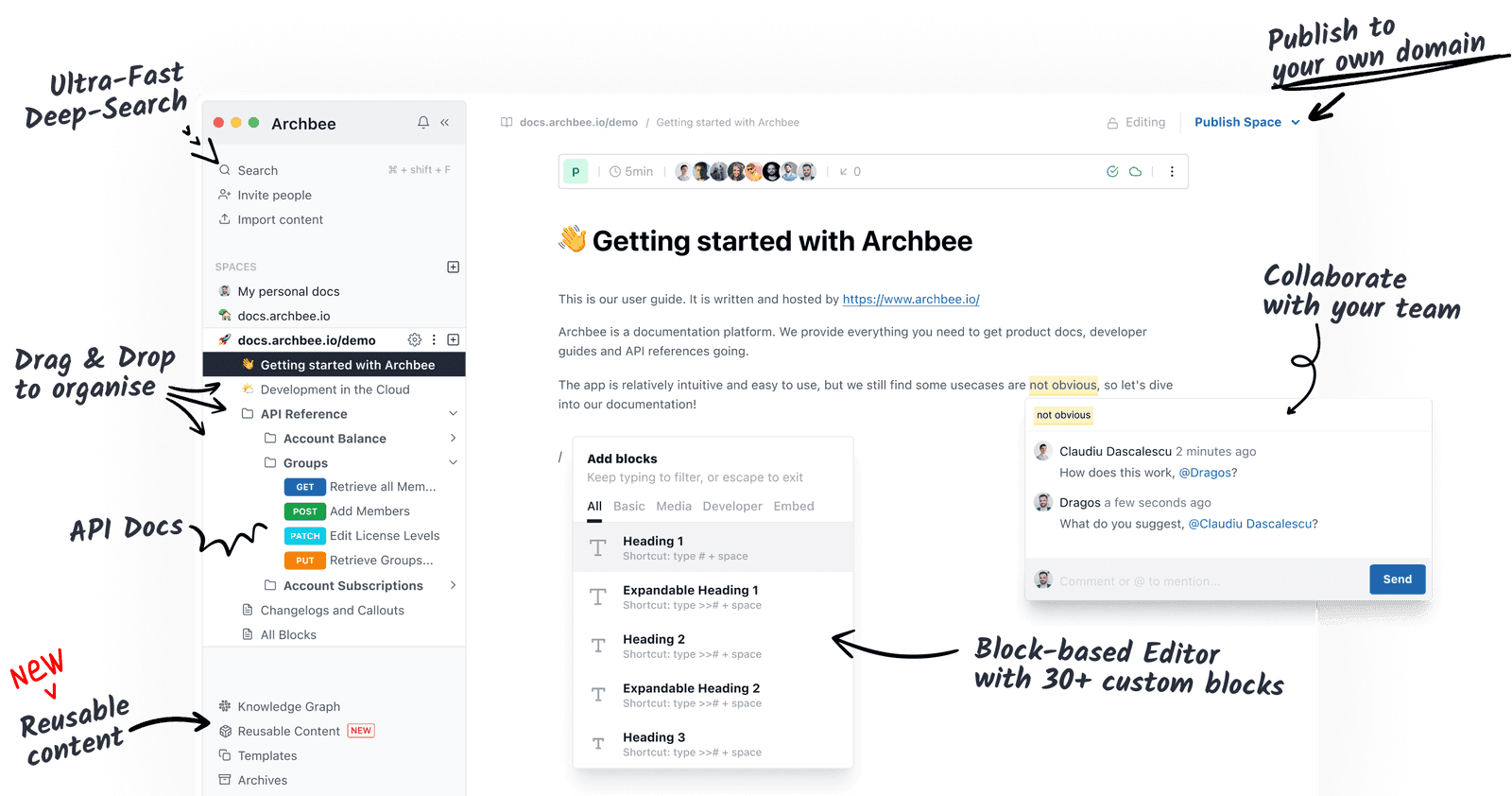
Source: Archbee
The effect of such a resource is that users always have access to knowledge that can help them seamlessly adopt the product.
They seldom find themselves in situations where they can’t figure out what to do or how to fix a problem, meaning their interactions with the software are comfortable and meaningful.
They simply don’t have a reason to quit it.
Take Hack the Box, the cybersecurity platform, for example.
This company implemented a knowledge base to reduce the pressure on their support team because users were frequently getting stuck on basic tasks and actions.
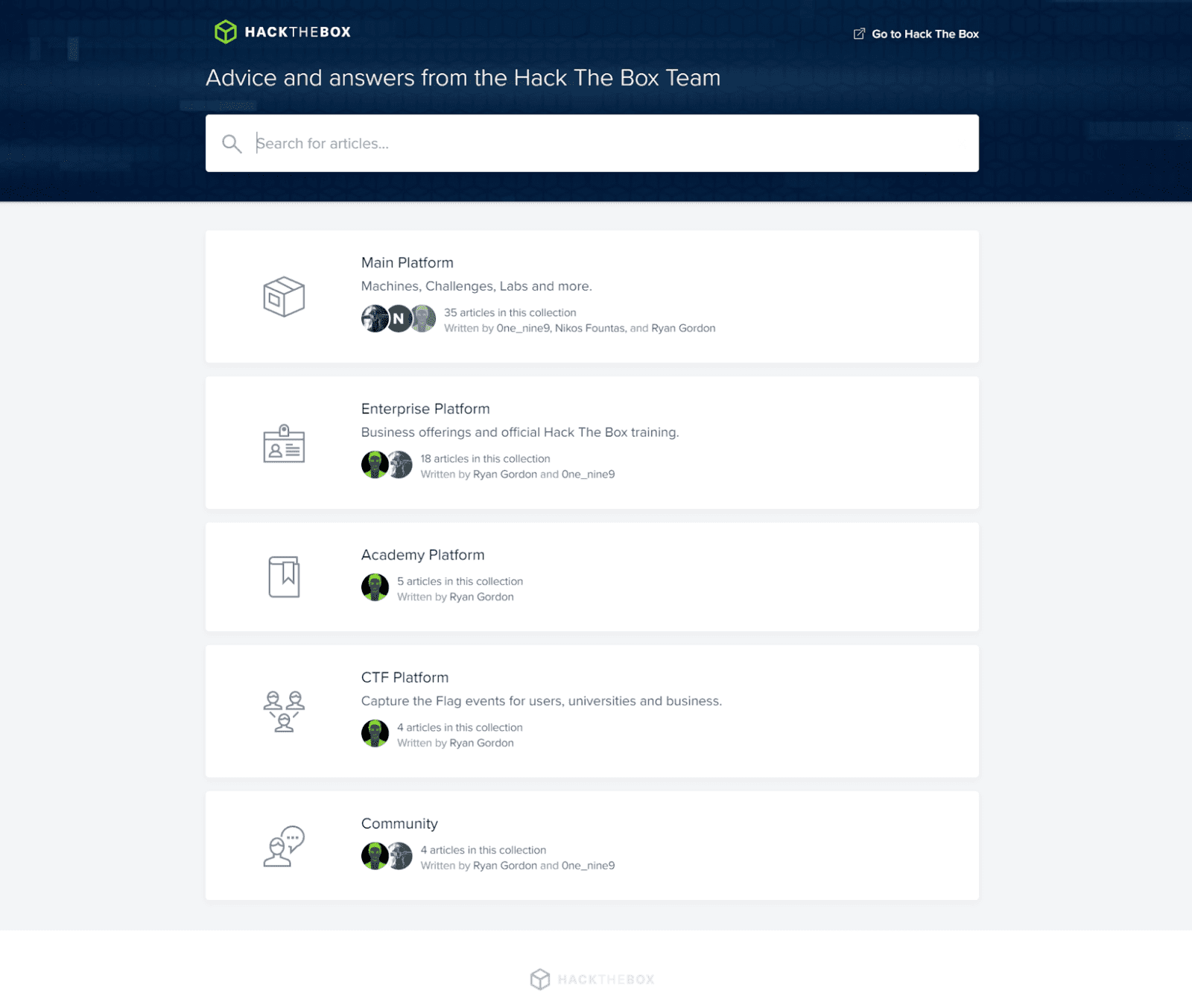
Source: help.hackthebox
A knowledge base fixed this problem because it gave the users the resources to learn how to use the platform correctly.
However, an unintended benefit the company didn’t expect was that they reduced their churn rates by a whopping 20%.
Knowing what we know about product adoption, it’s easy to understand how this happened.
Hack the Box uploaded enough useful knowledge to their base and gave access to all of its users who were able to easily learn the ins and outs of the platform and quickly realize the value it can bring them.
Having learned how to successfully use it for their goals, a much higher number of users decided to stay and keep using the platform.
That’s just one example of how a good product knowledge base can help you accelerate adoption and retain your users in the long term.
Host Webinars About Your Product
Even after your customers become regular users of the product and complete tasks with it regularly, there’s no need for user education to stop.
Quite to the contrary. The skills, experience, and, therefore, the needs of your users are always growing and changing, so it’s essential to expand the value of your product with them.
Otherwise, you might lose them to a competitor who offers a better fit.
Webinars can help you do that.
Webinars are live or recorded video sessions in which top experts from your company share industry knowledge, guidance for advanced product use, and tips and tricks users can integrate into their work to improve it.
Sounds great, right?
Well, it comes as no surprise that webinars are a powerful weapon when it comes to making adoption stick.
We know that because providing webinars for users is proven to have a very beneficial impact on customer retention.
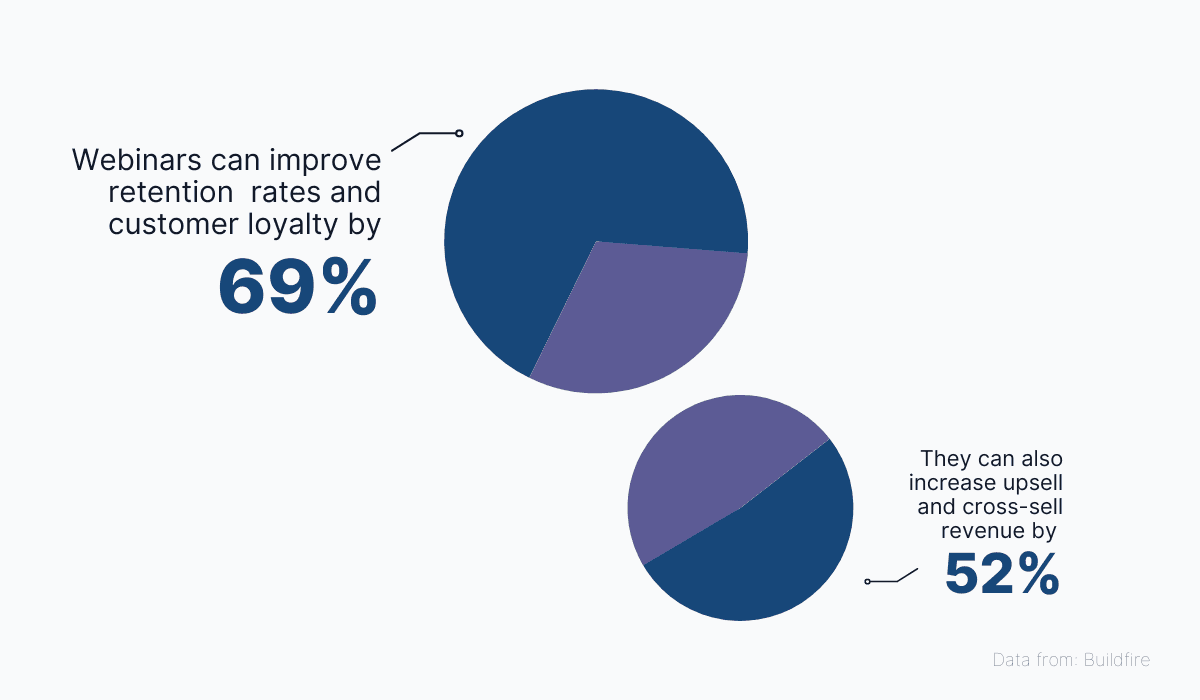
Source: Archbee
They can also help you create opportunities to upsell and cross-sell because the acquired knowledge motivates users to expand their use of the product and do more with it.
Both statistics point to one conclusion: webinars can cause users to connect with the product in more meaningful ways, which accelerates deeper adoption that’s very unlikely to fade away over time.
Let’s explain using a concrete example.
Drift is a user experience platform that offers communication resources such as live chat, chatbots, and conversational AI.
Their webinars provide knowledge on how their solutions can help companies engage with their customers and bring a human touch to their interactions to grow customer satisfaction and revenue.
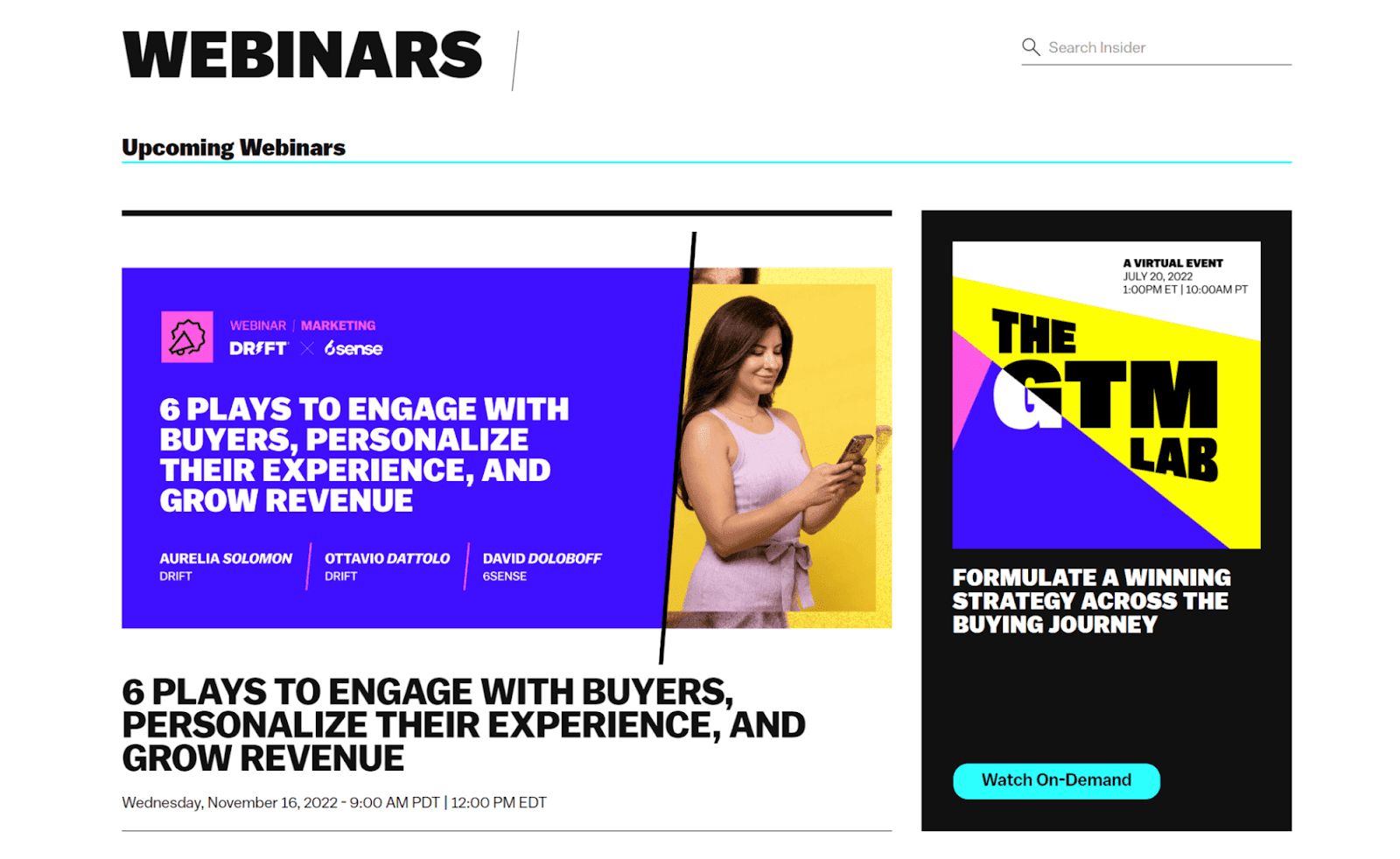
Source: Drift
In other words, visitors to Drift’s webinars stand to learn how to use the product in ways that will help them accomplish business goals and grow their companies.
With a resource like that, they should have no problem retaining users and keeping them hooked to their platform.
Long story short, webinars are a way for experts from your company to directly educate users on how they can accomplish more using your product.
That speeds up the process of your users becoming experts in your software, which means it also accelerates adoption.
Conclusion
Hopefully, this article was able to convince you that every stage of the adoption process can be accelerated to help customers bond with your software faster and more completely.
Best of all, each of these methods can be implemented simply by providing more access to useful content and actionable knowledge for your users.
We can conclude that knowledgeable users are the ones who adopt your product the quickest, so try to always follow the principle of educating and informing your customers and you should never have problems getting them to use your product regularly.
Frequently Asked Questions
To get customers to rely on the product in their day-to-day work so it becomes a habit that delivers ongoing value. When users integrate the software into their routines, you see higher activation, stronger retention, account expansion, and more referrals—the core outcomes SaaS businesses strive for.



